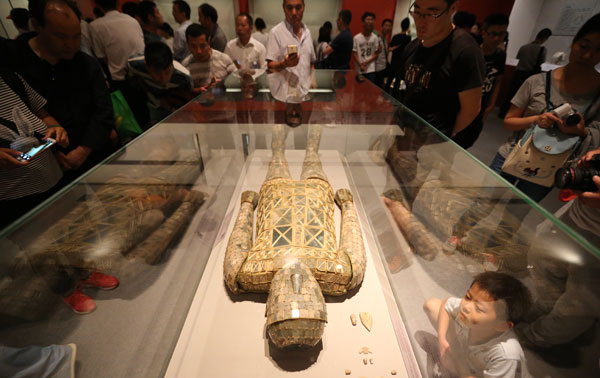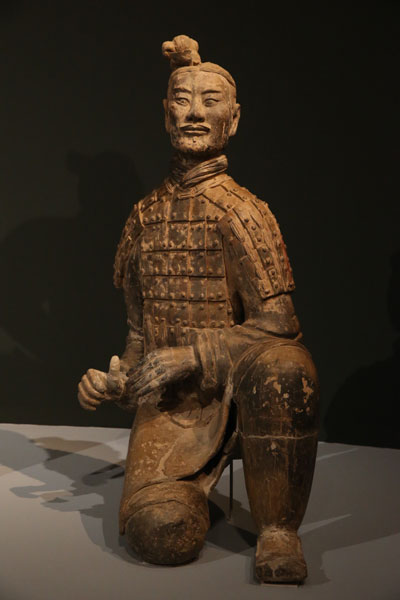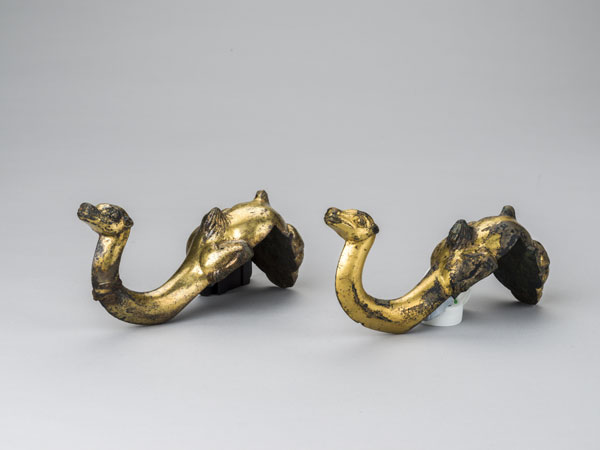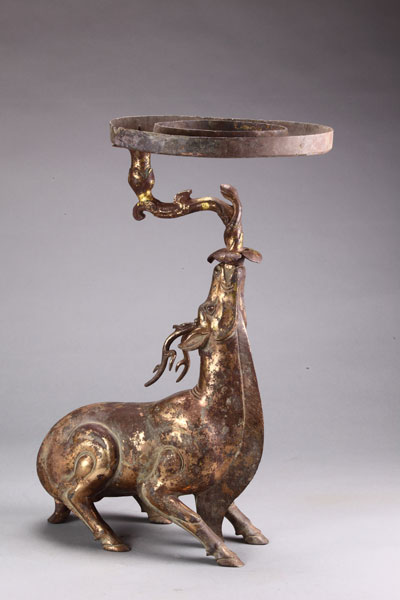Information
A tale of two dynasties
An ongoing exhibition of Qin and Han artifacts reveals how these periods continue to influence China and the world. Lin Qi reports.
From the widely exhibited Terracotta Warriors at the mausoleum of the first Qin (221-206 BC) emperor to a human-shaped bronze lamp that has for decades been the iconic display at the Hebei Museum; from a large burial ensemble featuring 172 centimeters of jade and gold wire to a finger-sized bronze die inlaid with semiprecious stones-indeed, the ongoing exhibition, Civilizations of the Qin and Han Dynasties, inspires audiences to think more about the two empires' glory days.
The display of over 300 artifacts explores a transformational era of Chinese civilization, from 221 BC to AD 220.
The ceramics, textiles, sculptures, architectural models and other artworks navigate the reforms in politics, economics, culture, philosophy and international exchanges whose influence has lasted for 2,000 years.
The exhibition vividly explains how the two dynasties laid the foundation for modern China and the role it plays in the world. It underscores a spirit of openness, diversity and tolerance, National Museum of China deputy director Huang Zhenchun says.
The Beijing museum is hosting the exhibition of items drawn from about 30 museums and archaeological institutions across the country. Nearly half are designated as first-class artifacts by the State Administration of Cultural Heritage.
Some were exhibited at Age of Empires at the Metropolitan Museum of Art in New York from April to July. Thomas Campbell, then the Met's director, described the exhibition as a "blockbuster show".
The other artifacts are on loan from museums around the nation. Several are "icons" on permanent display, says Wang Jun, director of Art Exhibitions China, a government institution that supports overseas exhibitions of Chinese cultural relics.
Shan Ying, the show's curator at the National Museum of China, says the Met show emphasized the two empires' cultural brilliance. It made it easier for audiences in the United States to understand.
The ongoing Beijing show provides more in-depth information to Chinese visitors, who've read a lot of history in textbooks, she says.
"It tells modern Chinese exactly how the Qin and Han (206 BC-AD 220) empires exceeded other cultures of their times and of their lasting influences on China and the world," she says.
Some objects, therefore, may not be visually stunning but are of historical significance, she explains.
A noted example is an inconspicuous paper map that dates from between 179 BC and 157 BC. Its inky lines depict mountains, rivers and roads.
It was uncovered from a Western Han Dynasty (206 BC-AD 24) tomb in Tianshui, Gansu province, and is part of the Gansu Bamboo and Wooden Slips Museum's collection. It's said to be the earliest specimen of paper with writing.
Eastern Han Dynasty (25-220) court official Cai Lun is traditionally credited with advancing papermaking technology. The map, therefore, helps people understand the invention and development of paper.
Also on show are official seals that testify to the formation of imperial authority and bureaucratic systems that continued in Chinese imperial courts for 2,000 years.
A highlighted jade seal is believed to have been used by Lyu Zhi, the empress consort of Han Dynasty founder Liu Bang.
It bears a four-character inscription that reads "the empress' seal". Its handle is carved to resemble a chihu, a mythical creature that often appeared on emperors' and empresses' seals since the Han era.
The show's architectural displays also feature symbology that hails imperial power, Shan says.
Shan says visitors should let their imagination run free when immersing themselves in the period.
"One can't help but feel people in the Han Dynasty were much more creative-for example, how they envisaged the afterlife and how they prepared for the next world by making such sophisticated burial objects as bronze money trees," she says.
"The exhibition samples artifacts spanning four centuries. Every item is highly representative of a period's brilliance and richness."
Contact the writer at linqi@chinadaily.com.cn
Category: English
News
Information
Key words:




